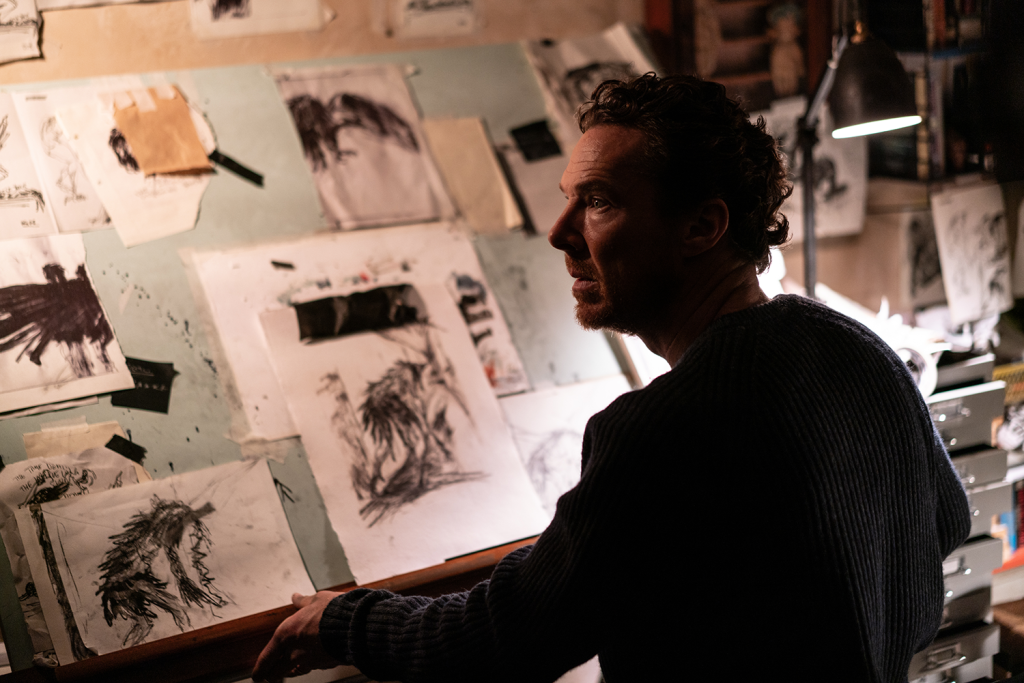‘Boo!’ came a voice from the stalls. ‘Boo. Outrage!’ It was hard not to feel a pang of admiration. British opera audiences don’t tend to boo; we’re either too polite or too unengaged. But there we were in Act Three of Kirill Serebrennikov’s production of The Marriage of Figaro – just after the scene where Susanna, the Count and the Countess enjoy a three-in-a-bed romp while singing the trio ‘Soave sia il vento’ – and at least one person felt passionate enough to raise his voice.
It was hard not to feel a pang of admiration. British opera audiences don’t tend to boo
Obviously, there’s no such trio in The Marriage of Figaro. It had been prised from Cosi fan tutte and shoehorned into the antics chez Almaviva: one of several dream sequences inserted by Serebrennikov in pursuit of his hard-hitting thesis – articulated through a neon-lit slogan at the back of the set – that ‘Capitalism Kills Love’. Bold stuff; so shocking that the Edinburgh audience (and it’s never been hard to distinguish between Edinburgh opera-goers and the Baader-Meinhof Group) had mostly been applauding with the utmost courtesy. Even – no, especially – when Cherubino (Georgy Kudrenko) pulled off his Y-fronts and leaped, butt-naked, out of the window.
In fairness, Berlin’s Komische Oper is currently one of the most interesting European opera companies. No one can have expected a vanilla Figaro from this source, and the cast was clearly at ease with Serebrennikov’s interventionist approach: a spirited, edgy Susanna (Penny Sofroniadou), a handsome-sounding Figaro (Peter Kellner) and a Countess (Verity Wingate) who sang with sustained sweetness and poignancy. The orchestra was buoyant under James Gaffigan, who did not deserve the second bout of (more widespread) booing that he received at the curtain call. Possibly they mistook him for the director.
And in the first half, at least, this was a fairly conventional updated Figaro. The Almavivas were well-heeled collectors of pop art and the two-storey set was slick, if distracting (this director does his own designs). Even Serebrennikov’s riskier interventions opened up rather than closed down the drama’s possibilities. A wordless Cherubino, communicating in sign language with a newly invented sister Cherubina (Patricia Nolz), who interprets his words through song? It sort of worked – at least until they started snogging. That was a bit much.
No, it was after the interval that Serebrennikov started to muck things up. There were dream sequences, an imagined massacre by the disgruntled servants (the compassionate left doesn’t half enjoy fantasising about mass murder) and a gradual pile-up of garbage and contemporary artworks on stage. A mute henchman (another of Serebrennikov’s additions) gradually turned into a dog.
Even then, it might have flown if Serebrennikov hadn’t started rewriting the score. Barbarina got the chop, and her Act Four aria was reallocated to the Countess. Then at the climactic moment of forgiveness – the point where Figaro ascends into the stars – Serebrennikov halted to insert a chunk of Mozart’s Dissonance Quartet while the Count (Hubert Zapior) writhed about on a dirty mattress. The Countess snubbed the Count and all possibility of redemption drained away. Hey, that’s reality! Suck it up, bourgeois scum. This aggressively jaded approach to opera is not uncommon in Europe; in as far as there’s a place for it in the UK, that place is probably the Edinburgh Festival.
Hey, that’s reality! Suck it up, bourgeois scum. This aggressively jaded approach is not uncommon
Any political subtext in Scottish Opera’s Oedipus Rex, meanwhile, was presumably unintentional. A small nation sees its leaders exposed as corrupt? No contemporary parallels there, even if one theme of this year’s festival (according to the festival director Nicola Benedetti) is ‘the necessity for unity’. ‘Better Together’, you might even say. In any case, the orchestra of Scottish Opera plus a big, enthusiastic community chorus took possession of the glass-roofed Grand Gallery of the National Museum of Scotland, squeezing around the elk skeleton, the Buddha statue and the old lighthouse lantern. The chorus mingled with the audience as the drama unfolded. In director Roxana Haines’s conception, the Speaker (Wendy Seager) was a museum cleaner and the cast were museum exhibits: ancient artefacts that came to life in an amusing riff on Stravinsky’s decision to cast the piece in an archaic language (Latin). Here too, the solo singers were heroic – Shengzhi Ren was a searing Oedipus and Kitty Whately a sombre, monumental Jocasta. Stuart Stratford conducted with the aid of at least three sub-conductors and it sounded raw and primal, although the acoustics and sightlines in the huge space were patchy at best. Frustratingly for a promenade performance, you couldn’t really promenade.
Still, it was a bracing, uplifting experience, elevated above all by the energetic singing and ritual gestures of the community singers, whose obvious enjoyment was hard to resist. It’s a curious sort of weekend when Mozart’s most life-affirming comedy leaves you sour and depressed while Stravinsky’s eye-gouging, mother-shagging horror-show has you punching the air with enthusiasm. But that’s why you go to Edinburgh.







Comments